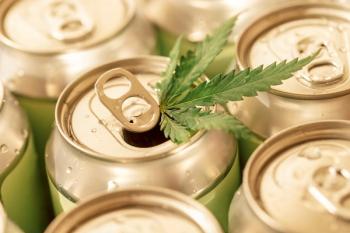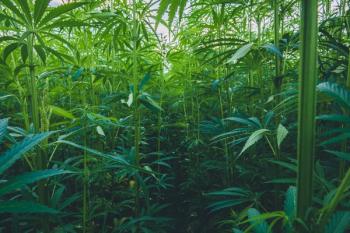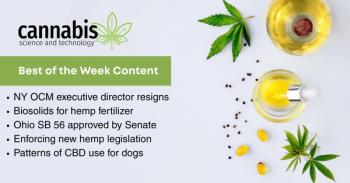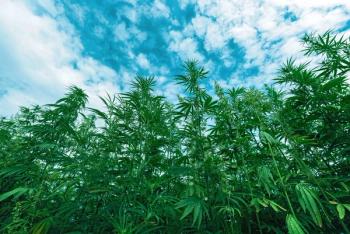
Cannabis Science and Technology
- March 2021
- Volume 4
- Issue 2
Qualitative Versus Quantitative Hemp Testing: The Limitations of Current Law Enforcement Field Tests
This article focuses on the technology being used in new rapid field tests that combine one-time-use color testing with a colorimetric panel that provides an identification and semiquantitation of THC and THCA.
Licensed hemp acreage has reached more than 465,000 acres across 47 states since the 2018 Farm Bill passed, yet most law enforcement utilizes field tests that are not able to correctly distinguish between hemp and marijuana. Even qualitative chromatography laboratory tests only reveal the presence of delta-9-tetrahydrocannabinol (THC), which hemp is legally allowed to contain if less than 0.3%. This article focuses on the technology being used in new rapid field tests that combine one-time-use color testing with a colorimetric panel—much like a pH test—that provides an identification and semi-quantitation of THC and tetrahydrocannabinolic acid (THCA). The significance of this is that cost effective rapid field tests will lessen the number of false arrests and allow crime laboratories to focus on more critical public safety testing.
You may not realize it, but there is a forensic problem with hemp. Due to the recent Drug Enforcement Agency’s (DEA) ruling and the 2018 Farm Bill, hemp and hemp products have become ubiquitous in the United States. In fact, hemp flower can be easily purchased online and in many retail stores. Many smoke hemp or use its derivatives for a wide variety of perceived medical benefits, or simply for recreational enjoyment.
For the forensic scientist, the problem is that legal “hemp” is the same plant (Cannabis sativa) as “marijuana.” The difference between them is that hemp is only allowed to contain less than 0.3% delta-9-tetrahydrocannabinol (THC). To date, the commonly used forensic field tests are unable to quantify delta-9 THC levels. The field tests used by most law enforcement agencies are perception based, evaluating the look or smell of the substance. Examples include one-time-use color tests such as the “Duquenois-Levine” presumptive test kits. This test produces a visible color development in the presence of delta-9 THC, but it does not indicate its concentration. Therefore, this test and others like it will not distinguish between legal hemp and marijuana.
This poses a significant problem for law enforcement. Possession of a hemp product will still mean a positive result in presumptive marijuana tests. As a result, people growing and transporting legal hemp have been arrested. Though they are largely able to resolve the legal confusion, they often spend time and money before they can do so. Individual consumers are at risk too.
All across the country, in all walks of life, people have been arrested for marijuana possession when they were actually in possession of hemp-based consumables. Even cannabidiol (CBD) users are at risk. Studies are showing that as many as 50% of the CBD products on the market contain trace amounts or greater of delta-9 THC. These products will therefore produce a positive result on the current presumptive tests. Although further laboratory testing can identify hemp versus marijuana, the test often takes weeks (if not months) and requires significant resources and generates substantial costs.
Clearly, the traditional methods of drug testing for marijuana are no longer sufficient for the current needs. Law enforcement needs a practical, cost-effective field test. The test needs to be able to quickly quantify delta-9 THC at roadside stops, therefore helping to prevent unnecessary investigations and elevated costs.
Fortunately,
As mentioned above, the traditional tests based on the Duquenois-Levine reaction produce a visible reaction. Specifically, the tests produce a chromophore with a blue or purple shade. However, the reaction is not specific to delta-9 THC.
There are many known compounds that will produce a colored molecule when coupled with the Duquenois-Levine reagent. Some of them are very similar in visible color. In this context, “color” is the perception by the observer of the photons that reach the photoreceptors in the eye. The human eye only has three types of cones that each respond to a different range of photon energy. What the brain interprets as color is the net effect of all the energy. As a result, different combinations of photons can produce the same net energy and be perceived as the same color.
Figure 1 shows absorption curves for two different blue dyes that are used in window cleaners. The graph represents how many photons of each specific wavelength are absorbed by the samples. Despite the differences in the absorption curves, each produces a similar blue shade. These are not exactly the same. However, they are similar enough that the average consumer does not notice the difference.
Duquenois-Levine type tests encounter a similar obstacle. Using the CIELab scale, the average person will not notice a color difference (DE) of less than 1–1.5. So, when evaluating a single color, people will likely not notice if a color is not exactly right. In forensic applications, if we are differentiating two colors, the differences can be accentuated by changing the ambient light so that only specific wavelengths are present. If light only at 700 nm was shone through the samples in Figure 1, only one of the samples would absorb it. Another approach is to use an optical filter that blocks colors coming to the eye. If the observer were only looking at photons between 680 and 700 nm, they again would only see one color.
Neither of these options are available with the standard Duquenois-Levine type tests. Therefore, the traditional tests introduce an additional chloroform extraction step that has been shown to be specific for the chromophore produced with delta-9 THC. When the extraction occurs, the presence of delta-9 THC is indicated.
Unfortunately, chloroform is acutely toxic, carcinogenic, and highly volatile. When ingested or inhaled it can harm the eyes, skin, liver, kidneys, and nervous system. So, the technology in TRU replaces this extraction step with a spectral comparison.
Like the traditional Duquenois-Levine tests, many compounds will react with the reagent formula used in TRU. However, none have been found to have the same absorption spectrum. (See Figure 2.)
The shape of the absorption curve can be used to compare the identity of the produced chromophore to the known absorption curve with the reaction product with delta-9 THC.
TRU capitalizes on this by utilizing a comparison of the reacted sample with an artificial color scale produced to have the same absorption spectrum. In this way, TRU can separate the chromophore produced by the reactions with delta-9 THC from other reaction products like the traditional Duquenois-Levine tests.
Because we don’t know all of the potential absorption spectra that TRU users may encounter, we cannot use narrow wavelength restrictions as described for Figure 1. Fortunately, in practice, the available light does not need to be that restrictive. This is because the net color is the effect of the ratio across the entire spectrum, and significant change or restriction will cause a difference in the resulting visual shade. This effect is referred to as metamerism.
When evaluating metameric effects, it is common to examine two samples right next to each other with varied light. While people will not tend to notice color differences, when they are side by side, differences become more obvious. This is similar to the color difference a homeowner sees when they use a different batch of wall paint on one part of the wall. With TRU, the user can match the color formed specifically to the color expected to indicate the presence of Delta-9 THC.
TRU then carries the comparison a step further. According to the Beer’s-Lambert law, the amount of light absorbed by a sample is linearly proportional to the concentration of the sample being tested. Simply stated, doubling the amount of a sample will double the amount of absorbed light. TRU uses this relationship by comparing the test sample to a colorimetric panel that has been prepared to emulate absorption at the appropriate concentration ranges.
The chemical reaction used by the TRU system is designed so that the limiting factor is the amount of delta-9 THC. Because of this, the intensity of color development is only dependent on the delta-9 THC level. With a universally calibrated test vial then, the user can yield many different color intensities. The user can compare the intensity of the reaction to a known colorimetric panel that will correspond to the amount of Delta-9 THC.
The final critical element in the product is the patent-pending disposable grinder and sampler, which allows for the rapid homogenization and sampling of herbaceous material, for a consistent sample, even when used in the field.
Putting all of this together, TRU is an elevated presumptive test that enables users to more appropriately sample hemp and marijuana products. Users are able to sample a calibrated amount of material to yield a color development that can be compared to a known colorimetric panel to both indicate not only the presence of delta-9 THC, but the percent amount. This determination will improve the ability of law enforcement to correctly access the probable cause for arrest.
While TRU is easy to use and can quantify the amount of delta-9 THC in a sample, it should not be used to replace full laboratory testing, when required. Rather, by providing a field result of the amount of delta-9 THC, TRU can differentiate what samples require full laboratory testing and what samples can be ignored. This is expected to eliminate up to 50% of the laboratory submissions.
In laboratory forensic drug analysis (also known as controlled substance testing), the differentiation between hemp and marijuana requires a quantification that identifies the percentage of delta-9 THC to the total dry weight. Since field tests are susceptible to subjective interpretation, mis-use, and other noncontrollable issues, they should only be used to provide probable cause for further investigation or to triage suspected samples. TRU is designed to fulfill both for any law enforcement agency. Backed by university research, TRU can allow any law enforcement agent to identify, in minutes, if a suspected marijuana sample is actually legal hemp. Considering that full laboratory testing takes weeks to months and can cost hundreds of dollars, TRU is positioned to save agencies thousands of dollars.
Further, by reducing the total number of suspected marijuana case submissions to the crime laboratories, forensic scientists will have more time to devote to other controlled substance cases, such as methamphetamine, heroine, and opioids.
Hemp and CBD products come in all shapes and sizes. From raw botanicals to highly-formulated OTC products, there is literally no end to the types of products that can contain hemp-based ingredients. Considering that most are made by small boutique companies with little or no quality control, the US market has been flooded with “hemp” or “CBD” products that contain an illegal amount of delta-9 THC. Understandably, law enforcement struggles to identify what is legal, compliant hemp and what is controlled marijuana.
Public attitudes about marijuana and hemp products have shifted. The laws are following, and more products will be on the market. This means that there is a need for products like TRU at multiple levels of use and restrictions. The science behind the TRU test was developed in collaboration between researchers at the
About the Authors
Ron Fazio is a former Board-Certified forensic scientist and the current Chief Operations Officer at Hemp Synergistics. Christian Westring, PhD, is the Director of the Center for Crime and Criminalistics at Purdue University Northwest. Charles Steele is the Forensic Science Coordinator at Purdue University Northwest. Direct correspondence to:
How to Cite this Article
R. Fazio, C. Westring, and C. Steele, Cannabis Science and Technology 4(2), 35-38 (2021).
Articles in this issue
almost 5 years ago
Hemp Testing Insanity III: This Time It’s the USDA!almost 5 years ago
Quality Control Checkpoints in Cannabis Processingalmost 5 years ago
Why Does Leaf Temperature Matter in a Commercial Grow Room?almost 5 years ago
Around the World: Canada’s Footprint on the Cannabis Industryalmost 5 years ago
How to Distinguish Hemp from Marijuana with Mid-Infrared Spectroscopyabout 5 years ago
Quality Matters: A Chat with Keystone Labs President, Jodi McDonaldNewsletter
Unlock the latest breakthroughs in cannabis science—subscribe now to get expert insights, research, and industry updates delivered to your inbox.




